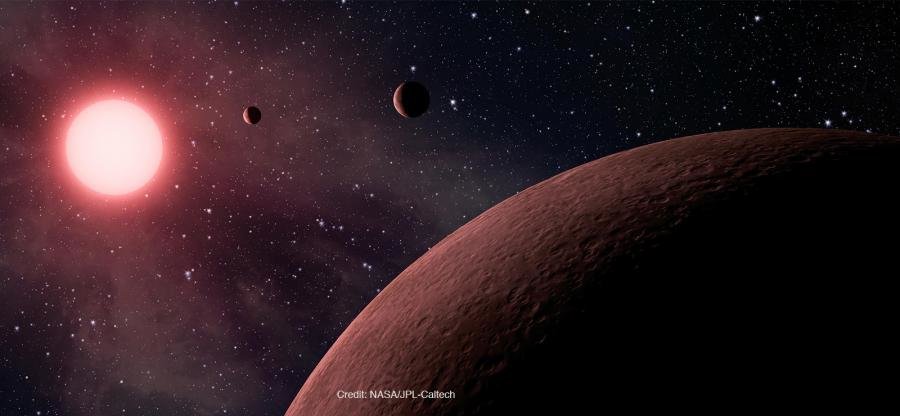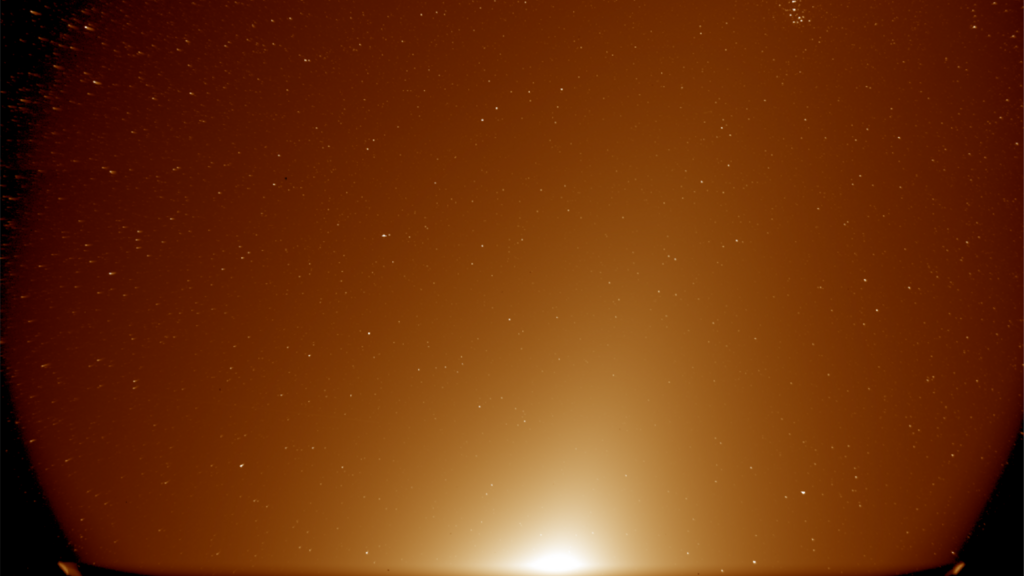The Exoplanet Most Likely to Support Alien Life Might Not Be Habitable After All

The closest potentially habitable planet may not be so habitable after all. The atmosphere of Proxima Centauri b could have been whisked away from strong winds blowing from its star. It is just one of dozens of rocky planets known to exist in the habitable zones around stars — the regions that scientists believe could provide the conditions for liquid water on the surface of orbiting planets.
But habitability depends on so much more than water. Two papers in Astrophysical Journal Letters consider one metric that has a huge influence on a planet's climate — its parent star.
Models described in these papers show the influence of the stellar wind, or the charged particles a star emits. If a star has strong periods of activity, the particles could erode the atmosphere over hundreds of millions of years and make it impossible for life as we know it to exist on the surface. A similar process may have happened on Mars, with many scientists saying the planet once had a thick atmosphere, but the sun eroded it over time.
"Traditional definition and climate models of the habitable zone consider only the surface temperature," lead author Chuanfei Dong of Princeton University said in a statement. "But the stellar wind can significantly contribute to the long-term erosion and atmospheric loss of many exoplanets, so the climate models tell only part of the story."

The first paper examines how long an atmosphere would survive on Proxima Centauri b, which is only four light-years from Earth and was discovered in 2016. The second paper looks at a type of planet called "water worlds" and questions how long oceans could survive. Because life takes billions of years to evolve, the research has broad implications for understanding of planet habitability.
The researchers concluded that the atmosphere of Proxima Centauri b would only be retained if the pressure from the stellar wind is low and the planet has a magnetic field to deflect the particles. Otherwise, they wrote, over time the stellar wind would strip the planet's atmosphere, which would become so thin that evaporated water in the atmosphere couldn't fall as rain.
"Our results indicate that [Proxima Centauri b] and similar exoplanets are generally not capable of supporting an atmosphere over sufficiently long timescales when the stellar wind pressure is high," Dong said.
Get the Space.com Newsletter
Breaking space news, the latest updates on rocket launches, skywatching events and more!
Even worse is what happens to the type of star that Proxima Centauri b orbits. The planet is nearby a red dwarf star, which is smaller and produces less energy than our sun. The habitable zone around these stars could change as the star evolves. Specifically, when a red dwarf is young, it is prone to producing high stellar winds. This means a young, nearby planet could lose much of its atmosphere before life has a chance to develop.
"In addition, such close-in planets could also be tidally locked like our moon, with one side always exposed to the star," Dong said. "The resultant weak global magnetic field and the constant bombardment of stellar wind would serve to intensify losses of atmosphere on the star-facing side."
The second paper asked how the oceans on water worlds would fare under different stellar wind conditions. It considered three scenarios. The first was an environment similar to the winds Earth experiences. The second one considers the stronger stellar winds believed to be present in young stars. And the third evaluates what would happen in the case of a huge "Carrington event" solar storm, which refers to an incident in 1859 on Earth when auroras disrupted telegraph service.
Unfortunately for life prospects, the simulations showed that the stellar wind from young stars would produce greater atmospheric loss on young planets, causing the oceans to dry up. And Carrington-type events — believed to be frequent in these young stars — would cause even more damage.
The researchers said these findings could alter the famous Drake equation, which estimates how many civilizations there might be in the Milky Way. One of the factors in the equation is the number of planets in a given star system with an environment suitable for life. But how that environment is determined to be suitable for life remains a matter of debate.
The authors say more observations, including from the James Webb Space Telescope that NASA will launch in 2019, are necessary to better estimate how many planets could support life.
While the case for life looks pessimistic on Proxima Centauri b, the scientists did note another recently discovery could have a better chance for life. Ross 128b, first announced in November, is just 11 light-years from Earth. It is rocky and in the habitable region of its star. But unlike Proxima Centauri b, the red dwarf star near Ross 128b appears to be quieter, without eruptions that could disrupt life on its surface.
Originally published on Seeker.
Join our Space Forums to keep talking space on the latest missions, night sky and more! And if you have a news tip, correction or comment, let us know at: community@space.com.

Elizabeth Howell (she/her), Ph.D., was a staff writer in the spaceflight channel between 2022 and 2024 specializing in Canadian space news. She was contributing writer for Space.com for 10 years from 2012 to 2024. Elizabeth's reporting includes multiple exclusives with the White House, leading world coverage about a lost-and-found space tomato on the International Space Station, witnessing five human spaceflight launches on two continents, flying parabolic, working inside a spacesuit, and participating in a simulated Mars mission. Her latest book, "Why Am I Taller?" (ECW Press, 2022) is co-written with astronaut Dave Williams.









